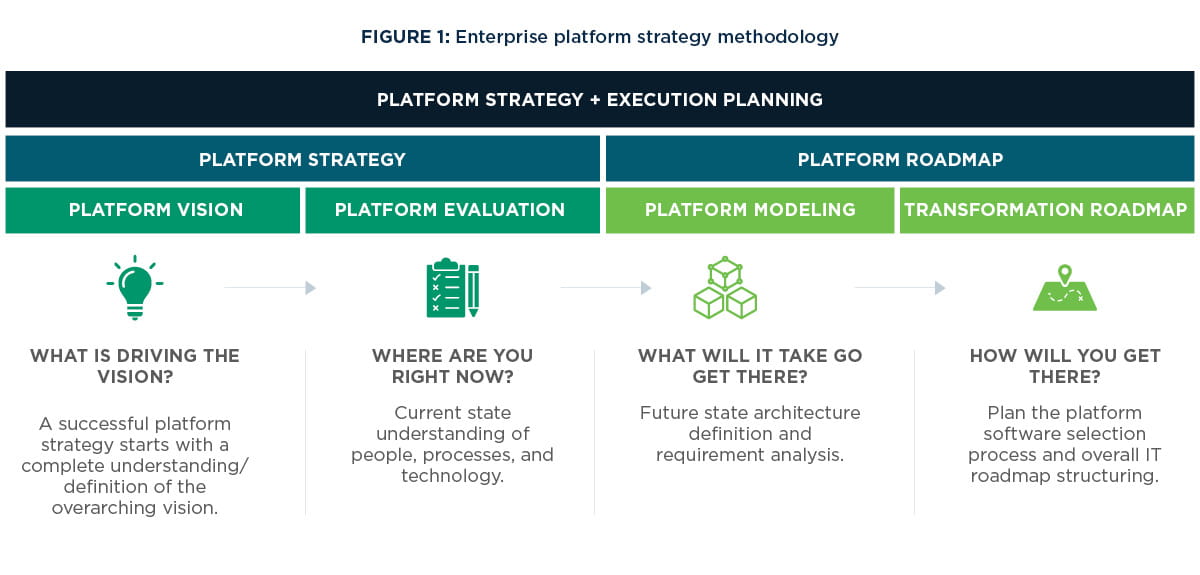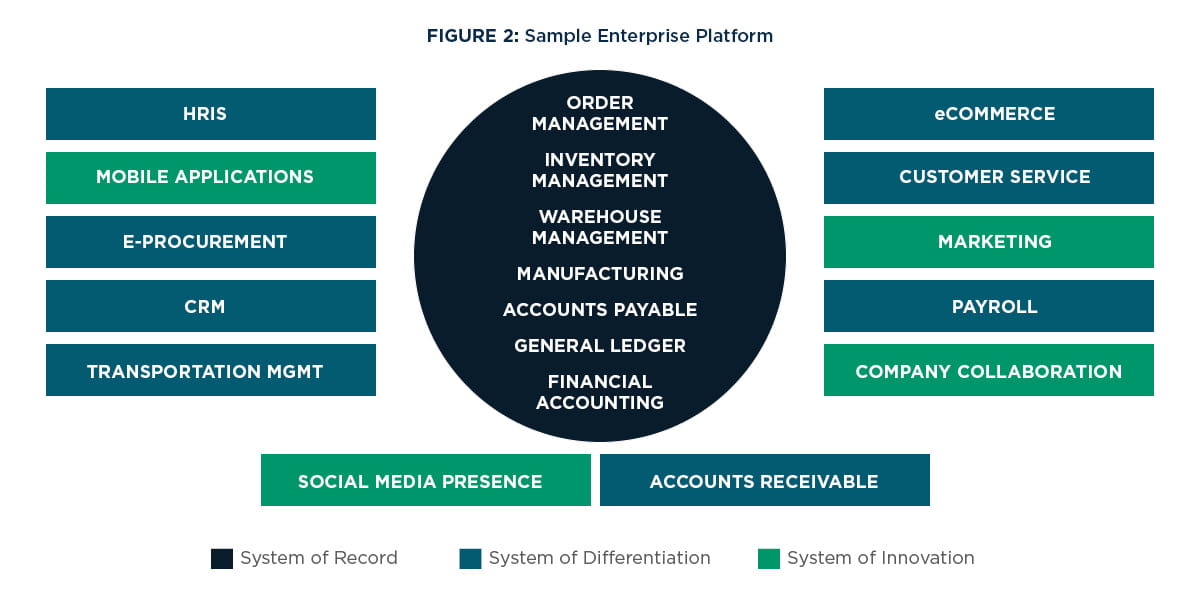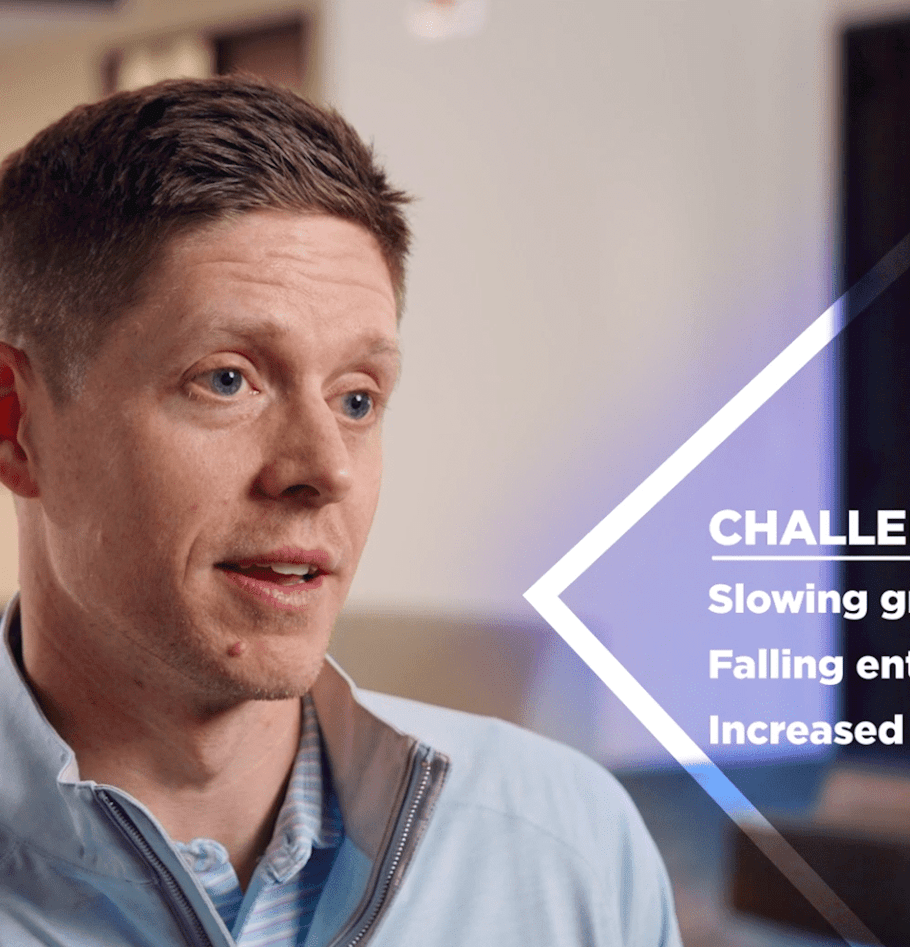
April 2019 | Point of View
Why you should prioritize process over product in your next software selection
Software selection can have a profound impact on an organization’s ability to effectively manage operations, increase revenue, and improve profit margins
Why you should prioritize process over product in your next software selection
With the array of information available online, from top 10 software lists and Gartner Magic Quadrants to blogs and white papers, an organization might be tempted to forego a lengthy, expensive formal selection process and move straight to implementation. But the proliferation of technology has made a definitive platform strategy—and every subsequent software selection supporting that platform strategy— the new imperative. Companies that pick software based on vendor relationships or price instead of the software that best aligns with the company’s business and technology strategy will risk spending millions to correct this costly mistake.
Rediscovering the benefits of the software selection process in today’s business environment
Whether they’re looking for small cloud solutions to address specific business requirements or robust enterprise resource planning platforms (ERPs), IT and finance executives today will find a wide range of potential solutions available from a multitude of vendors (all at varying costs). Making the right selection can require a complex effort; indeed, the complexity involved in choosing ERPs (typically the largest software expense for a company) has driven the growth of consulting practices that specialize in helping organizations make smart selections. However, given the breadth and depth of information available on the internet, is the time and expense of a software selection process still warranted.
The fundamental truth is that the selection process itself is as important as the outcome of that process. Software selection is about self-discovery and identifying what is and is not important to the business. It’s about collecting requirements and understanding which of those requirements warrant the most attention. Basic functionality will be the same across tools. Understanding what’s unique and most important to your business comes from the software selection process.
Take for example a global organization, which we will call NewCo, that provides consulting and implementation services in the construction realm; NewCo is looking for an ERP system. The organization currently has several robust custom applications that are used for project management, field operations, and customer service. The business has experienced significant growth in the past several years, rendering the existing systems inadequate to support the organization’s financial management needs. As NewCo’s CFO looks to select a new ERP system, the business sets three business objectives:
- The ability to support global operations across multiple currencies and languages
- Strong financial management capabilities
- Ability to integrate easily with custom applications
At this point, the team leading the selection process might be tempted to expedite the selection process. After a quick Google search for solutions that align with the objectives, and a review of Gartner’s Magic Quadrant for Enterprise Resource Planning, the team could make a decision and get started implementing. Unfortunately, it’s not that simple.
Software selection–a time for self-exploration
Even in organizations that recognize the complexity, the question inevitably arises: Is there real value in a rigorous software selection? It generally originates from one of two places; either a business thinks it has straightforward business processes and therefore any package will work, or a specific package already has strong support among key decision makers. In either case, leadership will question whether the time and resources that go into the software selection would be better spent getting the software implemented. This skepticism may be fueled by the belief that, once the business has narrowed required functionality to core requirements, any software from a list of competitors will work. The competitive software marketplace has created an environment where even staunch competitors can appear remarkably similar.
In this environment, NewCo could be tempted to quickly select a market-leading global financial management system and start the implementation, skipping a formal software-selection process altogether. By doing so, however, the company is missing a prime opportunity to better understand its business—and to find a software platform that will create significant value across the enterprise.
The software selection process should challenge NewCo’s initial business objectives. Perhaps there is more to consider in the selection than NewCo originally thought. As it investigates the pain points there will almost certainly be a shift in thinking about what is important. The original core requirements articulated for software selection should, and almost always do, change during a thorough investigation into the pain points and requirements.
Software selections help you explore the art of the possible
Software selection is about re-framing requirements and processes around new functionality the business can bring to bear. It is the beginning of a process of thinking about how to implement new software applications in a way to improve business processes. In the case of NewCo, which has a long legacy of custom inhouse applications, it’s about exploring new functionality with capabilities that exceed existing functionality. It is about educating NewCo’s stakeholders on how new tools can add a different spin to existing business processes.
NewCo might even discover that the time and expense of maintaining those legacy applications is not warranted with the new applications. Suddenly, an organization can find itself exploring a whole new set of requirements that previously were not even on its radar.
Thoughtful selection minimizes implementation risk
The dangers of software implementation are well documented. Massive cost overruns, underwhelming results, and damaged relationships to trading partners are just a few of the risks. Take ERP for example. Most organizations underestimate the costs associated with implementing a new ERP platform. Almost three quarters of ERP implementations exceed their initial budgets. Nearly 60 percent exceed their timelines; and when mistakes happen during implementation, correcting them can make the original budget and timeline seem like a relic of the distant past. For those reasons, it is vital to head into an implementation with a crystal-clear set of requirements.
A properly executed software selection will provide a blueprint for the implementation, which can begin on day one without spending weeks on expensive discovery.
A software selection process not only assists the organization with selecting the absolute best software among a wide array of choices, but it sets the tone for the implementation itself. For NewCo, the software selection gives the organization the depth of knowledge it needs to make hard decisions on the long-term value of their custom applications. These kinds of decisions need to be made to avoid costly implementation mishaps.
Software selection websites focus on features, not requirements
In the face of a complex and competitive software marketplace, a number of players have stepped in promising shortcuts to the software selection process. After asking for a few key requirements, these websites will magically pick the right solution for an organization. Their unspoken but fundamental premise is that picking software is a commodity service; many offer it for free. But users should beware, for a few reasons. First, these websites work on a pay-to-play model where the recommended software vendors pay to get shortlisted. This means many solutions will fall off the list for reasons that have nothing to do with the organization’s requirements.
Second, as we have noted software selection is a journey where the final criteria rarely match the original. Thus our recommendation is to use software selection websites only as minor tools in the selection process. They might help get the process started, but organizations should not give them a meaningful say in the final choice.
Don’t think software selection; think platform strategy
Selection is more complicated than in the past. Organizations have more choices in their application strategy because many applications offer integration options. This level of interoperability creates a need to evaluate how new software might fit in overall enterprise application strategy. For example, NewCo needs to closely review if their custom applications can and should be integrated into the software.
A better path forward
Software selection is a journey with no recommended shortcuts. Organizations start that journey with a few guiding principles and let the selection process continuously test those principles. In the end, an organization that follows the process to the end, even when the outcome seems clear, will find itself in a far better place to kick off their implementation.
How to approach your next ERP software selection
With any software selection, but in particular for a spend as large as ERP software, follow these eight steps to ensure a successful return on your investment:
- Determine accountability: This is a business led initiative, not IT. Ensure the business has ultimate accountability for the project.
- Focus on critical requirements: Separate requirements by ‘must have’ vs. ‘nice to have.’ Focus 100% effort on the ‘must have’ before defining ‘nice to have.’
- Conduct vendor demonstrations on your terms: You drive the vendor demo scripts, not the vendors. Most solutions do 85% of the same thing. Make sure the demo covers the ‘must-have’ that are critical to your business.
- Understand what’s included and what’s not: Customization (bad) vs. Configuration (ok): Know the difference and ensure vendors have the same definition, especially during the demos!
- Don’t fall for a vendor’s famous last words: ‘We can build that’ or ‘pre-built integration exists.’ When customizations are required, understand the effort involved.
- Take references seriously: Industry alignment matters. Ask for seven to eight, call on three to four.
- Understand and prioritize criteria: Get buy-in on the selection criteria weighting (functionality, GUI, integration, cost, vendor viability, SI market) before you build the evaluation scorecard.
- Understand TCO (Total Cost of Ownership) model: Build a five and seven year TCO to compare vendors— especially if comparing cloud and on-premises tools. Know what you’re signing up for.
Companies that start with a platform strategy designed specifically to support the business (and with an understanding of the goals of each platform) will make each subsequent software selection that much easier. Following the steps outlined in this paper will help finance and IT executives put the core operating platforms (like ERP) in place, not just on time and on budget—but in a way to drive productivity and integration across their operations. Put the right platform in place so that your organization is free of messy workarounds and is able to make decisions based on complete and accurate data.





.jpg?cx=0.5&cy=0.5&cw=910&ch=947&hash=A4606672548264CB35551B59CE1C1AC2)